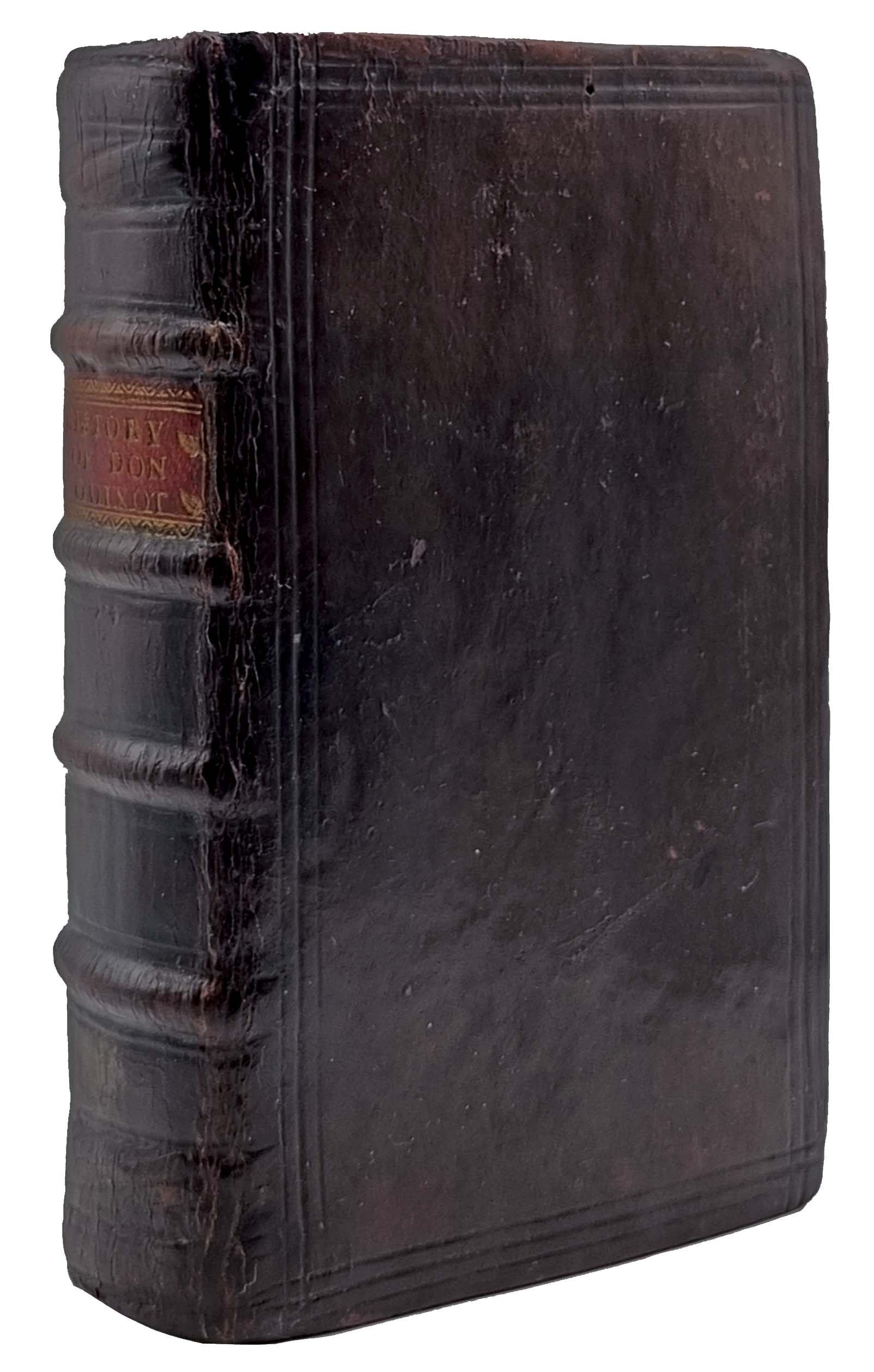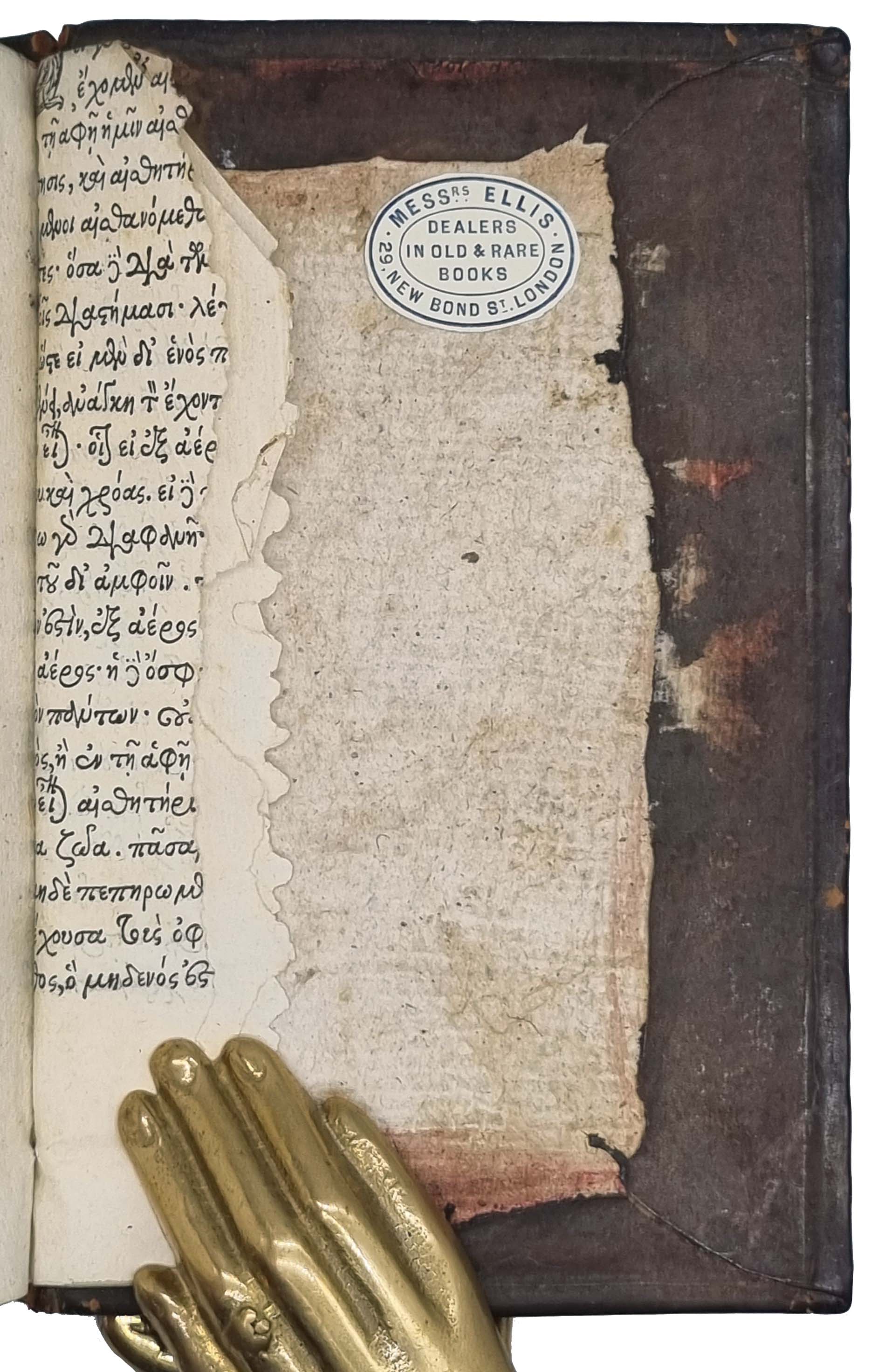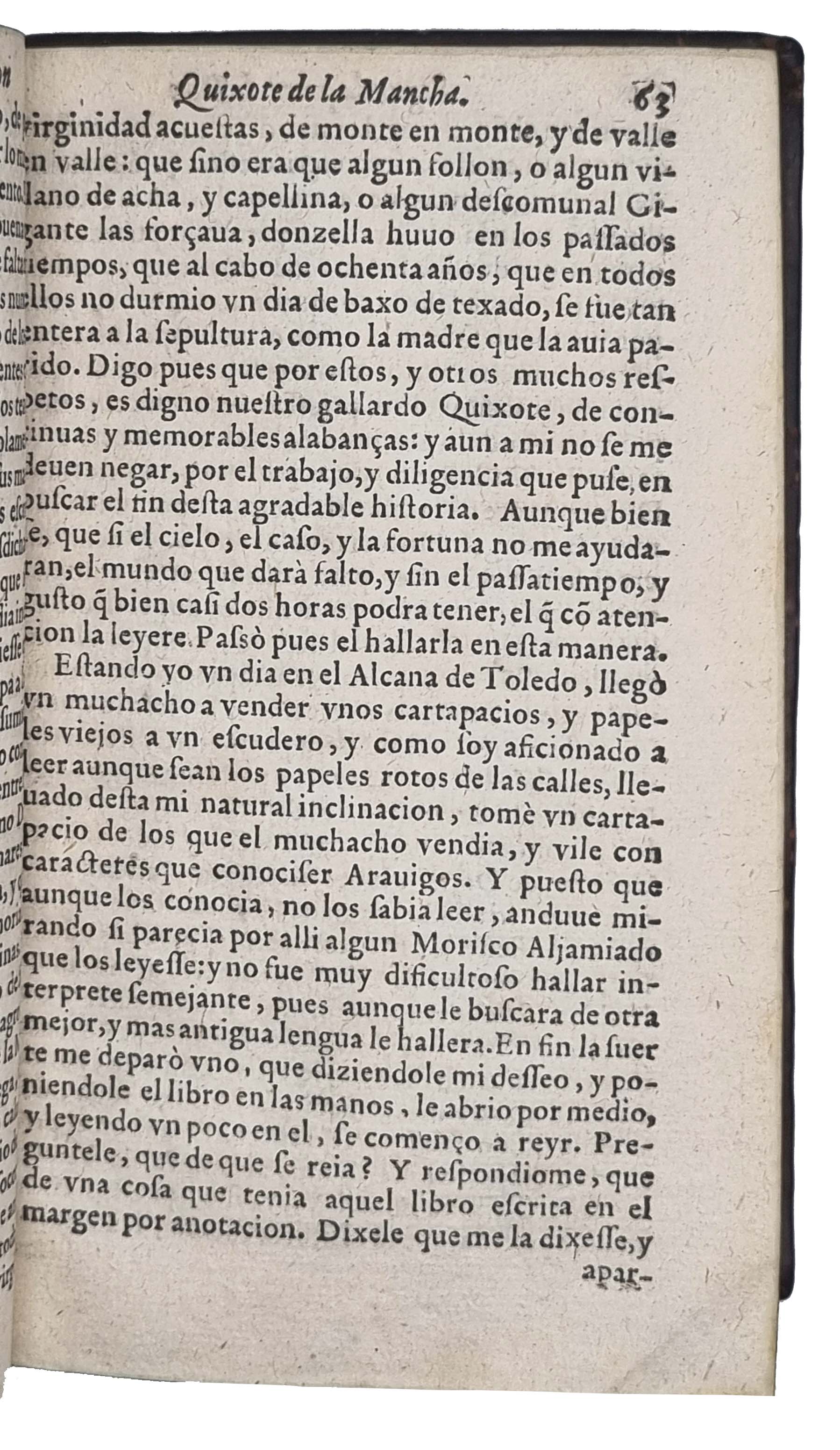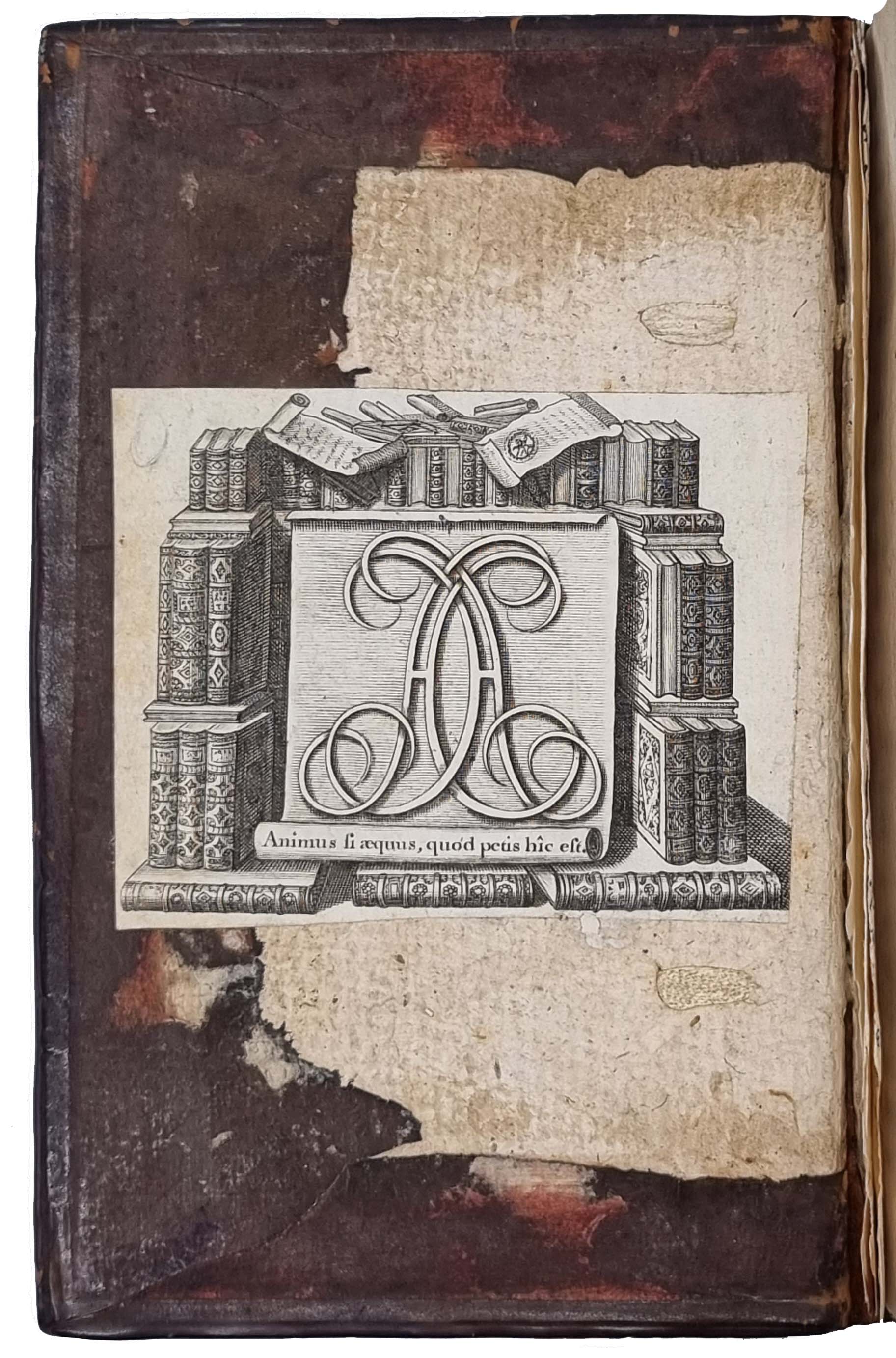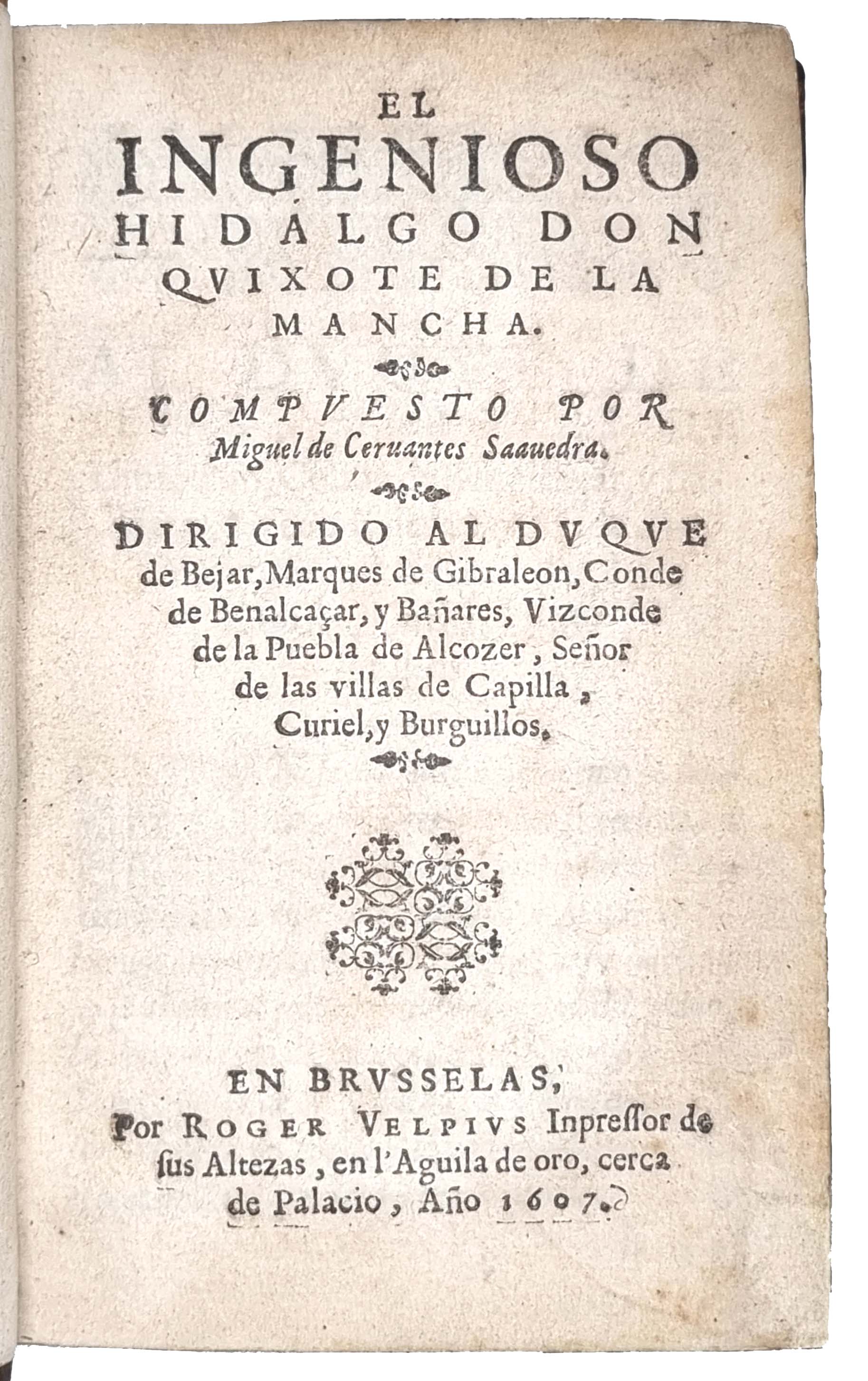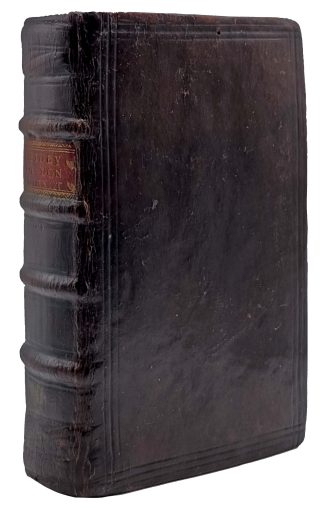CERVANTES SAAVEDRA., Miguel de.
OUTSTANDING COPY, EDITION AND PROVENANCE
El Ingenioso Hidalgo Don Quixote de la Mancha
Brussels, Roger Velpius, 1607£98,500.00
8vo., pp (xxiv), 592 (viii). Roman letter, floreated woodcut initials, typographical headpieces and other ornaments. Light age yellowing, t-p margins dusty and small repair to one blank outer corner. A few little ink spots and finger marks, upper margin cut a bit close but well clear of text, a remarkably good, clean, completely original copy in handsome contemporary English calf, covers triple ruled in blind, raised bands, spine ruled and diagonally patterned at head and tail, later C17 red morocco label gilt, all edges blue, stubs from a large, elegantly printed C16 Greek edition of Aristotle’s De Anima. Book III.
Elegant ‘bookpile’ bookplate of Arthur Charlett (1655-1722) with his monogram on front pastedown, that of Jean Peeters-Fontainas (1891-1975), 1933 on fly, early shelfmark E.5.7. on verso, pencil record of 1933 sale in Hodgson’s rooms on rear free e.p, old Quaritch “collated + complete” above, label of Ellis bookdealers of 29 New Bond street on rear pastedown. In folding box.
An outstanding English copy of one of the earliest editions of Don Quixote (first 1605) according to Ruis the best to date and the seventh overall. Most importantly, it was the first printed outside the Iberian peninsula, the edition that introduced the text to the non-Spanish world, and in particular to the readers of Northern Europe, who absolutely loved it. Often described as the first modern novel, copies were thoroughly read and examples in fine contemporary condition are rare. This copy was in England very soon after publication, the binding dates from the early years of the C17. Before the end of that century it was in the library of Arthur Charlett, Royal Chaplain, Master of University College Oxford, owner of a very extensive library – how many novels I wonder? He is probably responsible for the spine label and certainly the first ‘bookpile’ bookplate in England (cf. David Pearson) which he commissioned in 1698 from Samuel Pepys. After his death, intestate his books were sold at auction and widely dispersed. The next identifiable private owner, Jean Peeters-Fontainas was the pre-eminent bibliographer of the Spanish imprints of the Low Countries, then part of the Spanish Empire.
Apart from vastly expanding Don Quixote’s readership, Velpius also materially corrected and improved the text which is based on Cuesta’s second edition (Madrid, 1605), but now shorn of its many errors and imperfections both of printing and in the text itself. As Alan Thomas used to remark, if you did not know who Cervantes was you would not be reading this, but the learned editors of Printing and the Mind of Man put it so well that it bears repetition:
“What had begun as a simple satire broadened into a sweeping panorama of Spanish society; and it was this, the variety the liveliness, and the gibes at the famous, which won it instant fame. Its larger claims, the subdued pathos, its unusual humanity, were slower to be appreciated. But within months, Don Quixote and Sancho Panza had become legendary … Don Quixote is one of those universal works which are read by all ages at all times, and there are very few who have not at one time or another felt themselves to be Don Quixote confronting the windmills or Sancho Panza at the inn”. – Printing and the Mind of Man 111 on the first edition. Bloom described Don Quixote as “to Spanish literature what Shakespeare is to English”, these two great giants died on 23rd April 1616, the same day.
Peeters-Fontainas 225 (this copy). Rius 7 “En calidad del papel, finura de tipos y esmero de impresión, es superior esta edicion á las anteriores”. Palau III 51981.
In stock


